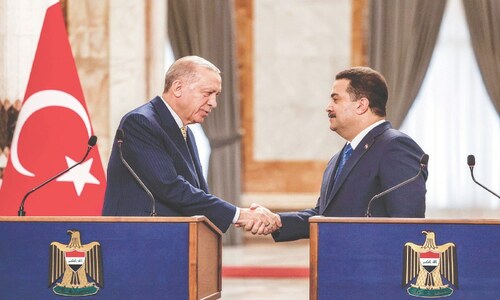IT won’t save much money in the short run, but it’s an opportunity to apply some logic to the Cold War thinking that hangs over these most destructive weapons.
The fiscal 2014 continuing resolution, thanks to sequestration, cuts almost $1 billion from President Obama’s requested $7.9 billion for the weapons programme of the National Nuclear Security Administration (NNSA), the Energy Department outfit that runs the nation’s nuclear weapons complex.
If the $6.9 billion projected by the Congressional Budget Office for the NNSA weapons programme is maintained for fiscal 2014, it “could soon accomplish what arms control activists have repeatedly failed to do, curbing the rapid growth of the US nuclear weapons budget,” according to an analysis in the Albuquerque Journal, the New Mexico newspaper that closely follows the nation’s nuclear weapons laboratories.
Budget cuts have already affected long-range Defence Department plans to replace the triad of strategic nuclear delivery systems. The next generation of Ohio-class strategic submarines has been cut by two — to 12 — and development work on the first one has been extended by two years. Research for a new strategic bomber and a new land-based intercontinental ballistic missile (ICBM) have slowed.
Long term, it’s the replacement of the delivery systems that could cost more than $100 billion in future years. But the bombers can carry conventional weapons, the submarines can serve alternative functions and the ICBMs can be upgraded to last for over a decade more.
It’s been one of the ironies of the Obama administration that in order to get enough GOP Senate support for the New Strategic Arms Reduction Treaty (New START) with Russia in 2010, the president had to agree to increase over the next decade the money spent on the nuclear weapons complex. He also had to agree to replace the three types of delivery systems.Oddly, in contrast, while President George W. Bush sharply reduced the number of strategic nuclear weapons, he was never pressed to spend the large amounts needed to modernise the nuclear weapons complex, much of which dates to the Manhattan Project.
So, over the past three years, Congress, with administration support, has kept increasing funds for the nuclear weapons programme while other discretionary spending, including for defence, was being cut. Funds grew incrementally from $6.8 billion in fiscal 2010 to $7.56 billion in fiscal 2013.
One problem: Increased costs of NNSA projects have eaten up what’s been appropriated. The Government Accountability Office (GAO) has for years put the NNSA on its “high-risk list” because of its poor planning, bad financial management, and waste and abuse in major construction contracts.
For example, the aging plutonium facility at Los Alamos National Laboratory was set for replacement. In 2005, the NNSA approved the Chemistry and Metallurgy Research Replacement (CMRR) project at an estimated cost of $975 million.
By 2010 the cost had “increased six-fold . . . to an estimated high of $5.8 billion,” the GAO said. Though the GOP forced Obama to fund CMRR plans as part of the New START deal, the administration deferred its construction for five years in order to pay for higher-priority projects such as the Uranium Processing Facility (UPF) at Oak Ridge, Tenn.
A GAO report released in July said that since 2010 the “UPF had experienced significant cost increases. More recently, the upper bound of the UPF’s cost range has increased from approximately $1.1 billion in 2004 to $6.5 billion.”
Last week, the Union of Concerned Scientists, a nonprofit science advocacy group that questions spending on the nuclear programme, issued a report that claimed the UPF “may have more capacity than needed to produce new canned [nuclear weapon] subassemblies.”
It called for a delay in constructing the costly UPF “until the production capacity required to support the stockpile is clearer.”
So just what does the United States need?
Forget going to zero. Nuclear weapons will not vanish, and therefore this country must maintain a complex of facilities to continue to monitor its stockpile and ensure the weapons that remain are secure and reliable.
Numbers are set by treaties with Russia. By February 2018, each country is limited to 800 delivery systems — land-based or submarine-based ICBMs or strategic bombers — but only 700 can be deployed. The number of deployed strategic nuclear warheads will go down to 1,550, but there is no cap on non-deployed warheads.
As of April 2013, according to State Department figures, Russia already was eight below the 500 limit in deployed delivery systems. The United States was over by 92. Both countries were 200 above in non-deployed systems. Russia also had 70 fewer deployed warheads than allowed by the 2010 treaty while the United States was above the 2018 limit by 104.
Cold War veterans and Obama critics want to tie further nuclear reductions to Moscow’s actions. They cite Russia’s several thousand tactical nuclear weapons as a barrier to the United States going below New START levels in strategic or tactical weapons.The Cold War is over. Threats have changed, and new thinking is required. Two nuclear weapons ended World War II, killing or injuring upwards of 200,000 people. Today’s strategic warheads have much greater explosive power and play more of a foreign policy or domestic political role rather than an actual military one.
Fewer would be better, and it is almost funny that it is their cost — which, comparatively, is minimal — rather than logic that ultimately may force a change in nuclear weapons policy.
By arrangement with The Washington Post/Bloomberg News Service













































Dear visitor, the comments section is undergoing an overhaul and will return soon.